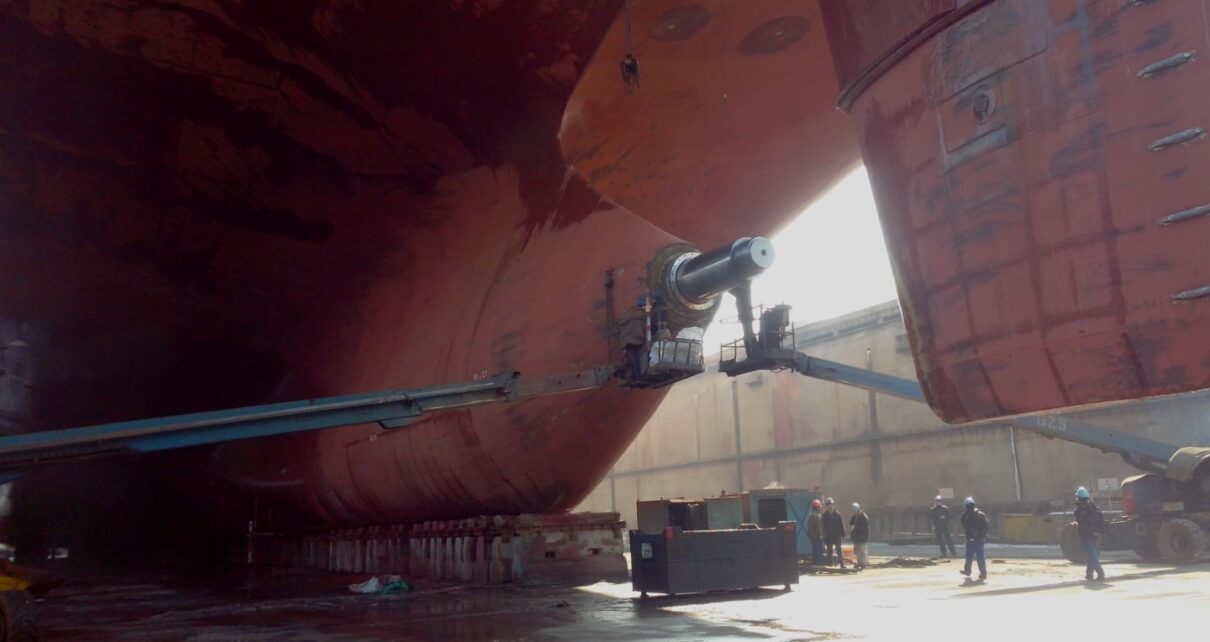Tail shaft monitoring is a system that enables operators to continuously observe and assess the condition of the tail shaft, which is the part of the propulsion system that connects the propeller to the engine. Tail shaft monitoring can help extend the interval between tail shaft surveys or withdrawals, which are mandatory inspections that ensure the safety and performance of the tail shaft.
Tail Shaft Monitoring
Tail shaft surveys or withdrawals are usually required every five years for cargo vessels, according to the various classification societies. However, some vessels may be eligible for extended intervals if they comply with certain requirements and have a tail shaft condition monitoring (TCM) notation from a recognized organization (RO), such as ABS or DNV-GL.
The requirements for TCM notation may vary depending on the RO, but generally they include:
– Temperature monitoring and alarm system for the tail shaft stern tube aft bearing, which is the bearing that supports the tail shaft at the end near the propeller. The system should have a high temperature alarm and two sensors, or one easily interchangeable sensor with a spare one onboard. The system should also have alarms for power failure, open circuit, short circuit, earth fault, and temperature signal outside the set points. The system should be located in the propulsion machinery spaces and connected to a centralized control or monitoring station if available.
– Oil seal design that allows for replacement without the shaft withdrawal or removal of the propeller. The oil seals prevent seawater from entering the stern tube and lubricating oil from leaking out. Approved type oil seals should be used, such as lip seals or face seals.
– Bearing wear down measurement that provides a means to measure the wear of the stern tube bearings. The wear down is the reduction in radial clearance between the bearing and the shaft due to abrasion or corrosion. The wear down measurement can be done by using feeler gauges, dial indicators, ultrasonic devices, or other approved methods.
– Lubrication oil sampling and analysis that checks the quality and condition of the stern tube bearing lubricating oil. Oil samples should be taken monthly under service conditions and analyzed for water content by using a suitable test kit. Additionally, at least every six months, oil samples should be submitted to a recognized laboratory for testing for bearing metals content, viscosity, acidity, oxidation, and other parameters.
– Stern tube bearings operating condition that monitors the performance and behavior of the stern tube bearings. This can be done by using vibration sensors, acoustic emission sensors, torque sensors, or other approved methods. The sensors should measure and record relevant data such as shaft speed, torque, vibration, noise, temperature, etc.
Tail shaft monitoring can provide many benefits for vessel operators, such as:
– Reducing maintenance costs by avoiding unnecessary tail shaft withdrawals or repairs
– Improving operational efficiency by optimizing lubrication oil consumption and minimizing friction losses
– Enhancing safety and environmental protection by detecting and preventing failures or leaks
– Extending service life and reliability of tail shaft components by preventing excessive wear or damage
Tail shaft monitoring is a valuable tool for maintaining and managing tail shaft systems. However, it does not replace regular visual inspections or maintenance procedures. Operators should follow the guidelines and recommendations of their ROs and manufacturers for tail shaft monitoring and surveying.




I think your blog is getting more and more visitors.